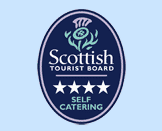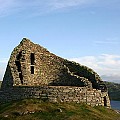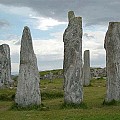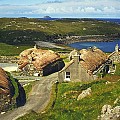


About the Isle of Lewis
It's not widely known, but the landmass of Lewis and Harris - different communities divided for centuries by a mountain barrier, and still dubbed different isles - is the biggest offshore island in Britain, bigger even than Skye, Mull, Islay, or that matter the Isle of Man or the Isle of Wight. Strongly coloured by its Viking inheritance - most of the placenames in Lewis are Norse; you'll actually find more Gaelic placenames in Fife - Lewis was the strongholds of MacLeod chiefs and MacLeod is still the commonest surname in the island.
The scenery of Lewis is rolling, eerie but subtly beautiful, especially when the sun shines down on the brindled moors between scudding clouds. Though not as treeless as people think, the acres of empty, mysterious heath extend everywhere. There is some spectacular cliff scenery and, especially up Broad Bay and down the West Side from Ness to Uig, there are some gorgeous sandy beaches and, here and there - like Shawbost - stretches of sandy sward, machair, where the lime-rich soil bears millions of lovely flowers on the long, long summer days.
25 South Shawbost is ideally placed for wider afternoon or daytrips round the island or even to Harris in the south - there is now an excellent two-lane road to Tarbert, not much more than an hour away. Don't miss, especially, a ploy to Ness and the Butt of Lewis Lighthouse, or the splendid scenery of quiet, mountainous Uig.
There are famous local attractions near at hand - the Standing Stones of Callanish, and the Broch at Carloway - each has a visitor centre, open throughout the tourist season - and the restored Black House Village at Garenin, with a visitor-centre, working black house, and restaurant.
Not ten minutes drive to the north, do visit the Arnol Black House complex, and its adjoining visitor centre - this particular Black House was vacated by its family only in 1964, but some survived on Lewis, and even in Shawbost, into the 1980s. At Ballantrushal, there is a tall, faintly spooky Standing Stone whose origins and purpose are still obscure; a little further up the road, at Shader, is the Steinaclet steading, which predates even the Norsemen.
Stornoway is just half an hour or so from Shawbost and, as well as its famous natural harbour and a fascinating museum, boasts an excellent selection of shops as well as restaurants, galleries and exhibitions and all the amenities one would expect of the biggest town in the Hebrides and, indeed, anywhere on the west coast north of Fort William.
There are two large supermarkets - indeed, Stornoway's modern Co-op, opened in 1996 and enlarged a decade later, is their biggest in Scotland. Don't neglect traditional traders, though - Stornoway has several craftsman baking shops, and fresh fish and shellfish are easily had from excellent fishmongers. The town kippers and smoked mackerel are just praised, but probably the most famous delicacy is Stornoway black pudding, produced by several family butchers to traditional, jealously guarded recipes.
Don't leave the island, either, without buying some Harris Tweed - the traditional, homewoven island cloth of incredible wearing quality and subtle, rustic hues. To this day - and to win the coveted Orb mark that attests the fabric as Harris Tweed - it must be handwoven by islanders in their own homes, and tweed is still woven in Shawbost today.
There is an excellent local bus service, but please remember that virtually all local facilities are closed on Sundays and that the Lord's Day is still widely respected on our island.






